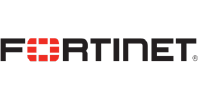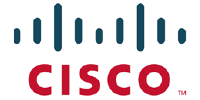Benefits of Email Security
Cyber Threat Protection
Business Continuity
Trust Building
Data Breach Prevention
Regulatory Compliance
Features
Anti-Phishing
Blocks advanced phishing attacks like impersonation and Business Email Compromise before they reach the inbox.
Malware Protection
Thwarts evasive malware and ransomware and provides sanitized files within seconds.
Prevents Data Loss
Sets custom policies to keep data safe and maintain compliance.
Prevents Account Takeover
Blocks suspicious logins using behavior-based analysis to protect data and ensure compliance.
Add-ons
- Email archiving
- DMARC Management
Our Security Partners
Get in touch
Arrange a call with our team to find out more, get a quote and tailor a solution to your needs.

Frequently Asked Questions
Email security involves protecting email systems from cyber threats such as phishing, account takeover, and data breaches. Due to its widespread use and vulnerability, email is a frequent target for attackers. Effective protection requires advanced, evolving security solutions to safeguard organizations, employees, and sensitive data.
Email collaboration tools like Microsoft 365 and Gmail have seen increased use since the COVID-19 pandemic, making them attractive targets for cybercriminals. Despite built-in security features, business email remains a common entry point for attacks that can lead to data breaches, regulatory issues, and reputational damage. In Mauritius, the Cybercrime Online Reporting System (MAUCORS) has recorded 19,300 online incidents since 2018, with 5,221 cases reported in 2024 alone—a number expected to rise in the coming years.
- Phishing
A cyberattack where malicious actors impersonate trusted individuals or organizations to trick recipients into revealing sensitive information or taking harmful actions. - Business Email Compromise (BEC)
A targeted form of phishing in which attackers deceive employees—often executives or finance staff—into transferring funds or sensitive data to the attacker. - Malware
Short for "malicious software," malware is designed to damage or gain unauthorized access to systems. It can be delivered via email attachments or links. - Data Loss
Hackers gaining access to email accounts can retrieve confidential information. Data leaks may also occur through accidental sharing or misdirected emails, often making employees vulnerable to further phishing attacks. - Spam
Unsolicited bulk emails that may serve as advertising or disguise malicious intent, such as spreading malware or phishing links. - Malicious Links
Emails containing harmful links can redirect users to attacker-controlled websites used for data theft, malware installation, or phishing. - Quishing (QR Code Phishing)
A phishing technique using QR codes embedded in emails. When scanned, these codes direct users to fraudulent sites aimed at stealing credentials or delivering malware. - Account Takeover
An attack where a cybercriminal gains unauthorized access to a user’s account—often through phishing, malware, or credential stuffing—and uses it to steal data or impersonate the user.
Email Security services use AI-driven technologies to protect your business against the most sophisticated attacks:
- Blocks sophisticated attacks like phishing, impersonation, and Business Email Compromise (BEC) using AI-powered detection.
- Stops malicious attachments before they reach user inboxes, ensuring safety without disrupting productivity.
- Prevents data leaks and helps maintain compliance through advanced Data Loss Prevention (DLP) tools.
- Protects against account takeovers by enhancing authentication processes and monitoring for suspicious activity.







